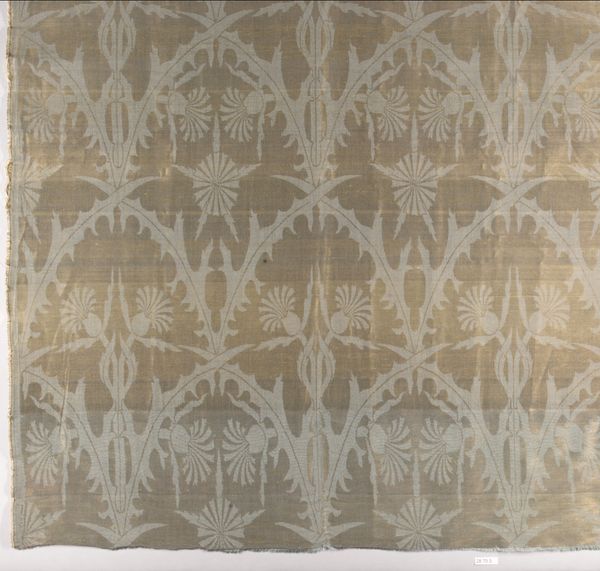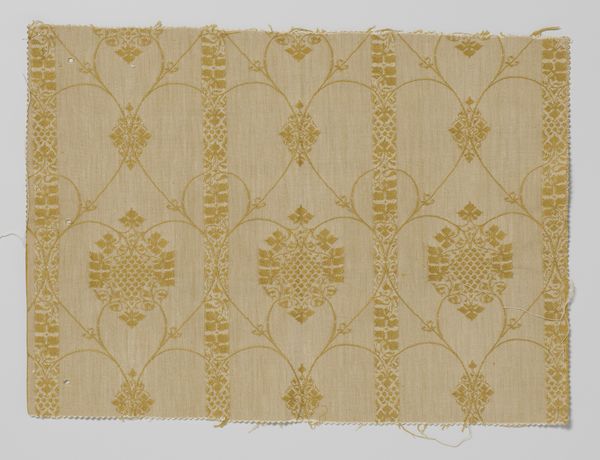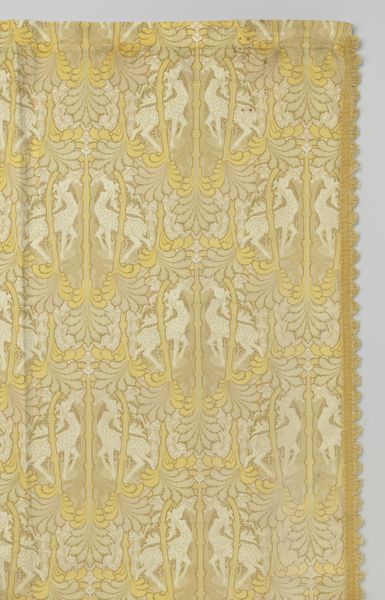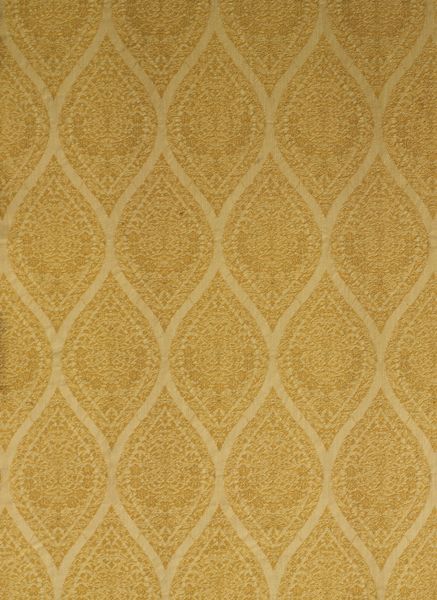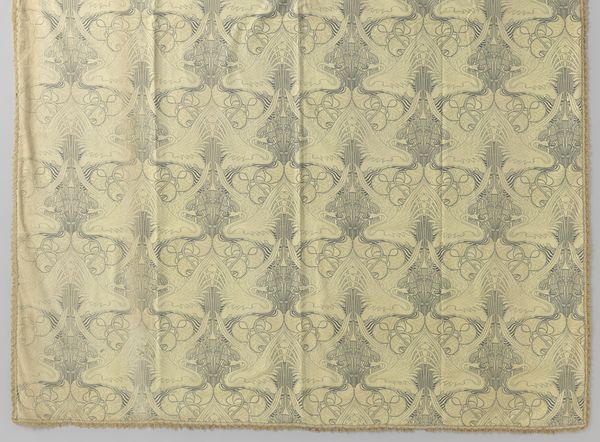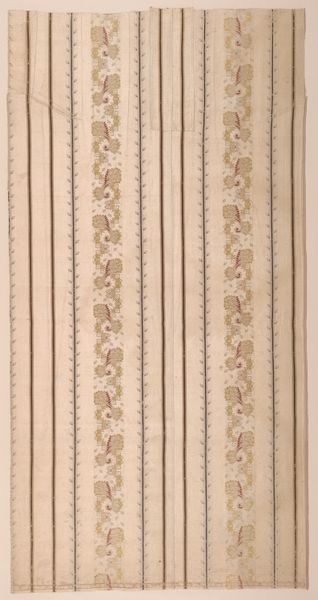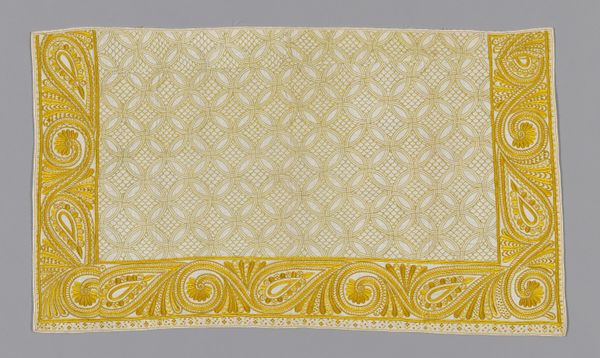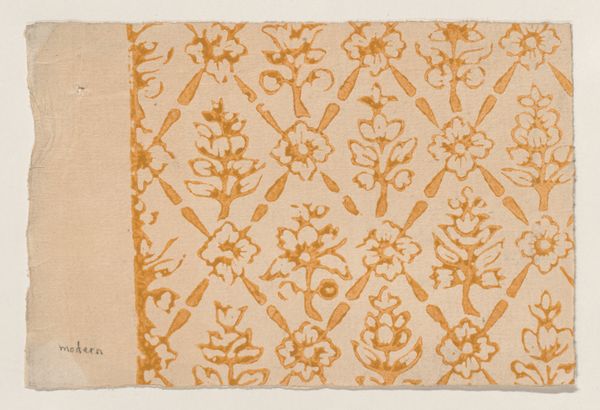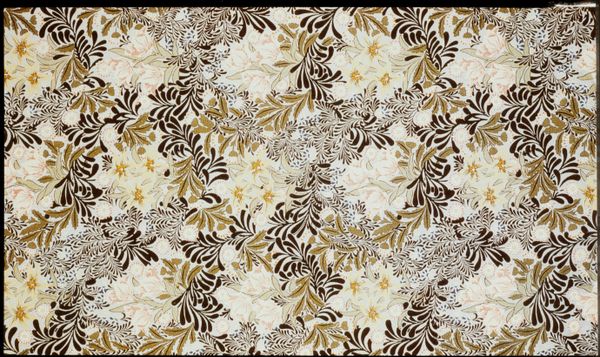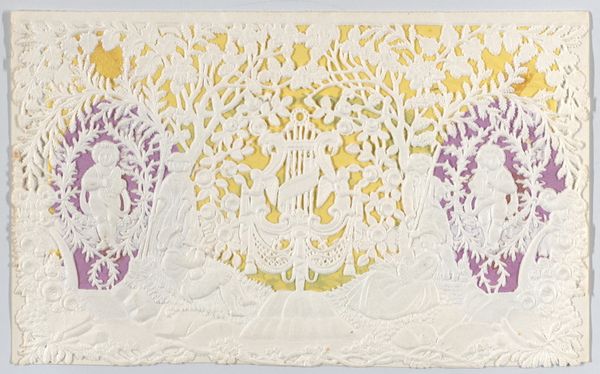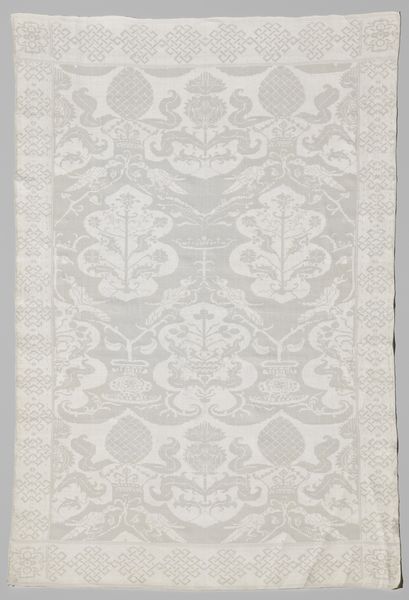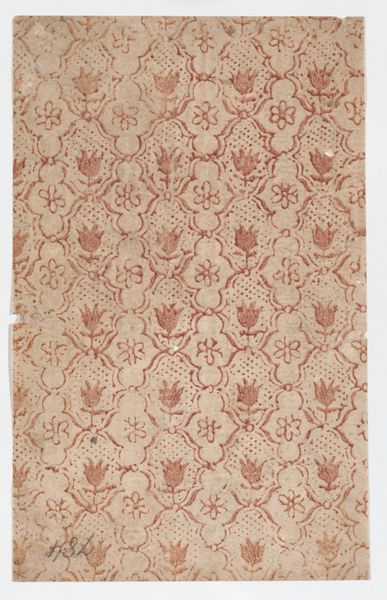
fibre-art, silk, weaving, textile, cotton
#
fibre-art
#
silk
#
weaving
#
textile
#
pattern repetition
#
cotton
Dimensions: 55 1/2 x 28in. (141 x 71.1cm)
Copyright: Public Domain
Curator: Look at this beautiful, undated textile work from the 19th century currently housed here at the Minneapolis Institute of Art. It's simply called "Cloth," and composed of cotton and silk fibre art employing weaving techniques. Editor: My first impression is that it feels delicate, almost like a whisper of a design. It’s very light in colour, which adds to that feeling. What do you find striking about this particular piece? Curator: I find it fascinating how the anonymity of the creator adds to its enigmatic quality. We can only speculate on the hands that carefully crafted these repeated patterns! It seems both familiar, as an object of everyday use, yet it hints at layers of possible historical meanings too, like a faint, ancient message in code. Editor: Definitely. And the almost hypnotic repetition within its design begs questions about labour, about the gendered history of textile production, and who was traditionally charged with this patient, meticulous work? Was it meant as simply decorative, or was it meant to signify status and political or even economic power through the display of intricate craftsmanship? Curator: Absolutely! I'm also pondering its dual existence: it is a humble cloth, perhaps part of some clothing. But on the other hand, its painstaking detailing elevates it beyond utility into the realm of pure art. It dances between practicality and profound expression, a little wink from the creator across the years. Editor: The lack of bold colours also seems significant. Instead, it presents various tonal variations with understated confidence. Its soft texture, the quiet layering of these patterns... It quietly asserts the value of what is often dismissed as women’s work. I am also interested to note how "fibre art" is categorized. Who decides whether this should be hung in a museum versus still simply exist as cloth for everyday usage? Curator: I think the piece succeeds in asking the viewer these complex questions. Now, considering its inherent simplicity, I’m also struck by the richness of associations that the “Cloth” has provoked. An object can conceal stories we can never grasp fully. Editor: I agree; objects have stories ingrained within them, if we decide to stop and really *see* them. We are simply vessels, holding time, tradition and labor through cloth.
Comments
No comments
Be the first to comment and join the conversation on the ultimate creative platform.
